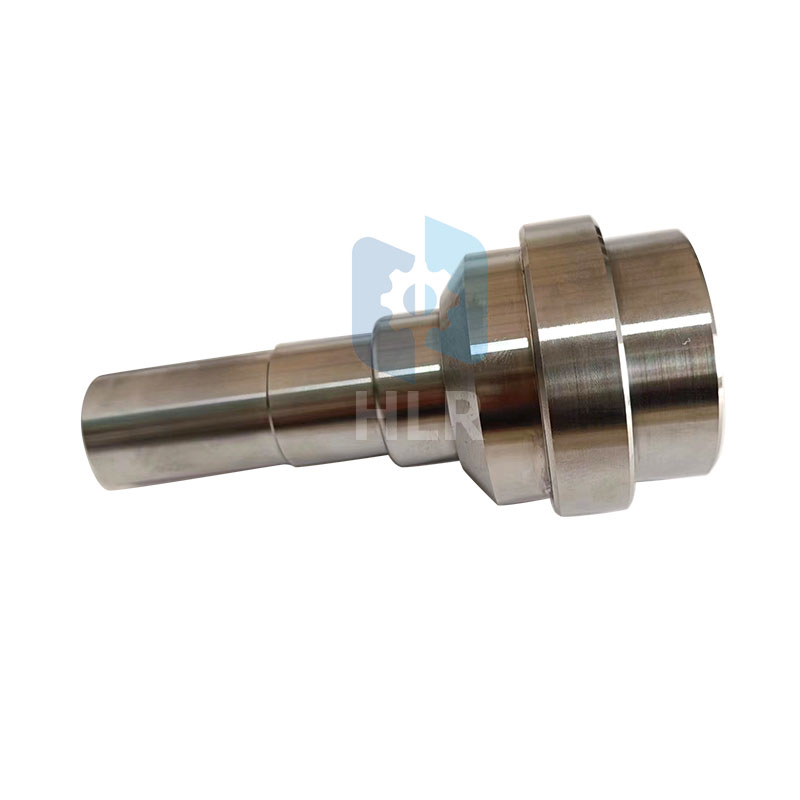Overcoming Challenges in CNC Lathe Machining Stainless Steel Shafts
2024-06-20
CNC (Computer Numerical Control) lathe machining has revolutionized the production of stainless steel shafts, offering precision and efficiency. However, like any manufacturing process, CNC lathe machining faces its own set of challenges, especially when working with stainless steel. In this blog, we will delve into the common challenges encountered in CNC lathe machining stainless steel shafts and explore effective strategies to address them.
1. Tool Wear and Tool Life
Challenge:
- Stainless steel is known for its hardness and abrasiveness, which can lead to accelerated tool wear during machining. This reduces tool life and increases production costs.
Solution:
- High-Quality Cutting Tools:
- Using high-quality carbide or ceramic cutting tools with appropriate coatings can enhance tool durability and resistance to wear.
- Optimized Cutting Parameters:
- Adjusting cutting speeds, feed rates, and depths of cut based on the specific grade of stainless steel minimizes tool wear while maintaining machining efficiency.
- Regular Tool Inspection and Maintenance:
- Implementing a routine schedule for tool inspection, sharpening, or replacement ensures consistent performance and reduces unexpected downtime.
2. Heat Generation and Thermal Expansion
Challenge:
- Stainless steel generates significant heat during machining due to its high thermal conductivity. This heat can lead to thermal expansion of the workpiece and affect dimensional accuracy.
Solution:
- Coolant and Lubrication:
- Using coolant and lubricants effectively dissipates heat and reduces friction between the cutting tool and the workpiece. This helps maintain stable machining temperatures and improves surface finish.
- Controlled Machining Environment:
- Operating CNC lathe machines in a controlled environment with stable temperature and humidity levels minimizes the impact of thermal expansion on dimensional accuracy.
- Tool Path Optimization:
- Optimizing tool paths to minimize dwell time in specific areas can help reduce heat buildup and mitigate thermal effects on the workpiece.
3. Chip Control
Challenge:
- Stainless steel tends to form long, stringy chips during machining, which can wrap around the tool or workpiece, leading to tool breakage or surface defects.
Solution:
- Chip Breakers and Chip Evacuation Systems:
- Implementing chip breakers on cutting tools helps in breaking the chips into manageable lengths, preventing them from causing machining interruptions.
- Proper Chip Removal:
- Ensuring effective chip evacuation systems, such as chip conveyors or high-pressure coolant systems, removes chips promptly from the cutting area, reducing the risk of re-cutting and surface damage.
- Optimized Cutting Parameters:
- Adjusting cutting speeds and feeds to promote chip formation and evacuation improves machining efficiency and reduces chip-related issues.
4. Workpiece Stability
Challenge:
- Stainless steel shafts, especially long and slender ones, may experience vibration or chatter during machining. This instability can affect surface finish and dimensional accuracy.
Solution:
- Rigid Workholding:
- Using sturdy and precise workholding fixtures or chucks ensures the workpiece remains stable and securely held during machining operations.
- Damping Techniques:
- Implementing vibration-damping techniques, such as adding vibration-absorbing materials or using anti-vibration tool holders, reduces chatter and enhances machining stability.
- Optimized Cutting Conditions:
- Fine-tuning cutting parameters and tool paths to minimize vibrations and harmonics improves machining stability and enhances surface quality.
5. Surface Finish and Dimensional Accuracy
Challenge:
- Achieving smooth surface finishes and precise dimensional tolerances can be challenging in stainless steel machining due to its hardness and tendency to work-harden.
Solution:
- Finishing Passes:
- Incorporating finishing passes with reduced depths of cut and optimized cutting speeds improves surface finish quality and dimensional accuracy.
- Tool Selection and Condition Monitoring:
- Selecting sharp cutting tools and monitoring their condition throughout the machining process ensures consistent surface finishes and dimensional integrity.
- Post-Machining Processes:
- Implementing post-machining processes, such as polishing or grinding, can further refine surface finishes and meet stringent dimensional requirements.
Conclusion
Navigating the challenges of CNC lathe machining stainless steel shafts requires a combination of advanced technologies, strategic planning, and experienced craftsmanship. By addressing tool wear, thermal management, chip control, workpiece stability, surface finish, dimensional accuracy, and machining complexity with proactive strategies, manufacturers can achieve superior results in terms of quality, efficiency, and cost-effectiveness. Embracing these solutions ensures that CNC lathe machining remains a reliable and preferred method for producing high-quality stainless steel shafts across various industries and applications.



